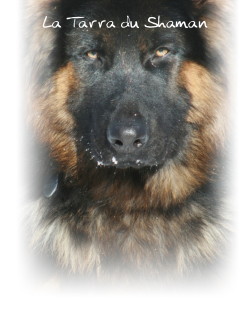Körung Rules
Körordnung (SV Breed Survey Rules)
The Verein für Deutsche Shäferhunde (SV) e.V. [Club for GSDs Inc.] is the parent club for the breed, and has responsibility for it and its Standard, which is acknowledged by the German (VDH) and international (FCI) Kennel Clubs. The Körordnung [breed survey regulations] of the SV serve the advancement of the controlled breeding of the German Shepherd Dog race in both varieties: the “Stockhaar” (straight-haired, medium length topcoat) and the “Langstockhaar” (longer topcoat but also with undercoat), and regulate the overall breed survey. They are a permanent part of the SV rules, and obligatory for all members. The purpose of the Körordnung is to select from the breed registry a number of dogs which in their character, performance, and anatomical construction appear to be suitable for the conservation and improvement of the breed.
2. SV - Nature of the survey
2.1 Köramt (survey office)
The Kör (survey) office prepares the annual survey scheme (deadlines, reporting local chapters, acting Körmeisters, survey regions, etc.). All evaluation reports from the various survey districts are recorded in that office, and are examined and documented for form and accuracy. The Köramt produces the survey certificates and annually publishes all surveyed dogs in the Körbuch (survey record book).
2.2 The Körmeister (breed survey master)
For the implementation of the breed survey the SV requires an experienced conformation judge as Körmeister. The Körmeisters have no legal right to annual employment in breed surveys. The choice and employment of the Körmeister is done by the respective Landesgruppe (region). The jurisdiction of arranging for these teacher-helpers for the breed surveys lies with each Landesgruppe’s executive committee.
2.3 Survey administration — regional club jurisdiction
The regional and/or local jurisdiction of the breed survey shall be delegated from the SV headquarters to the SV regions and/or local chapters.
2.4 Time of survey
The survey season [in Germany] extends from the 1st of March to the 30th of November each year. The presentation of a dog for the breed survey is possible once in this period.
2.5 Legal issues
2.5.1 The owner of a dog scheduled for the survey’s tests must be a current member of the SV. The eligibility of the dog ends with the withdrawal of the owner’s membership in the club.
2.5.2 Survey jurisdiction
The location of the dog’s residence determines which breed survey it participates in (where the Körung is performed); that is, in the owner’s region (Landesgruppe). Local club (Ortsgruppe) membership determines which region that is. If a person holds membership in several local clubs, regional membership is determined by the main place of residence. Members who belong to no local clubs are assigned to a region based on principal place of residence. Breed survey masters (Körmeisters) are free to choose or approve of Körung locations in all regional groups.
2.5.3 A dog that is the property of a person listed as being permanently barred/suspended from the studbook can neither be shown in a breed survey by him personally nor by any other person.
2.5.4 The decision of the acting Körmeister is final. An objection against it is not permitted. 2.5.5 At the survey of a dog, any and all damage claims by any party involved (owner and/or outsider) resulting from an Ankörung- (conformation measurement/survey) decision or an Abkörungsentscheidung (performance) decision regarding any dog will explicitly not be allowed.
2.5.6 Responsibility: The owner of a dog is responsible for any damage attributable to his dog.
3. Requirements for participation at breed surveys [see note below re Körung in Germany]
- The Körung is appropriate only for German Shepherd Dogs registered in the breed book of the SV, and which have coats classified as “Stockhaar” or “Langstockhaar mit Unterwolle” (translation: “straight topcoat hair” or “long straight topcoat” -- both requiring wooly undercoat). In the year of the Körung they must be at least two years old;
- Proof at least a SchH-1 or IP-1 Prüfung (test) under an SV Leistungsrichter (performance judge); including at least 80 points in section C, the courage and protection phase;
- Proof of an AD examination under an SV judge;
- “a”-stamp for hips, shown in the Ahnentafel [certified SV pedigree. Translator’s note: an equivalent issued in another country where the dog resides is satisfactory];
- ED stamp for elbows also in the Ahnentafel (if born after 01.01.2004, required starting in the 2008 show season);
- Proof of a minimum quality evaluation of “Good” under an SV judge.
Further conditions:
- Sick dogs may not be shown;
- The Körmeister must be informed of bitches in season; this determines when that dog will participate;
- The dog must be identifiable in regard to a legible tattoo, microchip reading, etc.
4. Activity of the local clubs
4.1 Requirements of the local club:
- Large training ground with ancillary premises and sanitary facilities
- Trained members in sufficient number
- Typewriter or word processor.
4.2 The club must have or obtain:
- Assistant/steward and typist/secretary for the Körmeister
- Sufficiently large ring
- Public address system
- SV-approved measuring devices [for height at withers and depth of chest]
- Tape measure
- Weight scale
- 2 starter’s pistols with sufficient ammunition
- Number vests for the dog handlers.
4.3 Duties and responsibilities of the Körung manager:
- Timely delivery of the registration forms
- Examination of documents for completeness and accuracy
- Information given to the Körmeisters regarding the receipt and standing of the entries
- Establishing a catalog-like list of contestants and their dogs and bitches, for repeat and new breed surveys
- Submission of the individual dogs’ examined documents to the Körmeister before the beginning of the breed survey
- Confirmation of entrants’ SV memberships
5. Registering for the breed survey
The entry for the breed survey has to be received by the local Kör managers at least seven days before the scheduled survey as indicated in the survey announcement and entry form. By the day of the breed survey at the latest, the following documents are to be presented:
1. Original Ahnentafel [SV pedigree and performance record]
2. Conformation show cards and scorebook
3. If at the repeat survey, the first survey’s certificate
4. Proof of completion of any specified requirements remaining from the first survey
The maximum number of dogs admitted for one breed survey day is 50. In case of an entry of more than 50 dogs a further survey day (or half-day) is to be added on the same weekend. [In practice, preference is normally given to dogs going for their Lebenzeit (second and lifetime) survey.]
6. At the survey (Ankörung)
6.1 Temperament test
Each dog is to be subjected a temperament test by the Körmeister. The examination of the dog’s character can be made during the over-all breed survey. According to the Standard, the dog has stable character, i.e., in particular he is impartial and unaffected, self-assured, with firm nerves, and amiable and peaceful.
6.2 Gunsureness test
From a distance of at least 15 steps, at least two shots are to be fired from a starter’s pistol (6 mm or .22 caliber); the dog has to behave indifferently [is not bothered, cowed, or nervous because of it; joyfully expecting to do bitework, such as when a whip is cracked with similar sound, is O.K.].
6.3 Protection/Courage test [this rule version effective since 1997]
To help in the protection phase of trials in his Landesgruppe, the Körmeister is available as a teacher-assistant.
Conduct:
I. The attack from the blind
1. The handler reports with his accompanying dog to the Körmeister.
2. On order from the Körmeister the dog handler takes 30 steps from a place marked as the starting position toward the hiding-place, with his dog off leash.
3. The leash is draped around the handler or put in his pocket.
4. On command from the Körmeister the dog handler proceeds, with his dog heeling off-lead, in the direction of the hidden helper.
5. The dog should heel tightly.
6. On command from the Körmeister, the helper comes out of the blind and undertakes an attack as if to drive off the dog handler and dog, or he may initiate this himself if the dog or dog and handler are found to be 5 steps from the hiding-place.
7. The dog must immediately, surely, and energetically fend off the attack by applying a firm and full-mouth grip.
8. When the dog has grasped, it receives from the helper two blows with a padded stick upon thighs, sides, or the area of the withers.
9. To encourage the dog’s defense against the attack, encouragement by the dog handler is allowed.
10. Upon command from the Körmeister, the helper discontinues the attack and stands still quietly.
11. The dog then (independently or on the audible signal “Aus!”) must let go and [appear to] hold the helper “spellbound” [by its gaze and perhaps barking a warning not to move].
12. The dog handler is given the order from the Körmeister to approach his dog.
13. He leashes his dog and receives the order from the Körmeister to step into a certain hiding-place [momentarily, to prepare for the next attack].
II. Defense of an attack from a distance
1. The handler is called out from the hiding-place by the Körmeister and goes with his dog to the assigned position [at a central place at one end of the field].
2. The dog is taken off-leash and may be firmly held by the collar.
3. The dog has to be restrained in this position, until it is later sent with the audible command “Voran!” in the defense of the next attack.
4. The helper leaves his hiding-place upon a signal from the Körmeister, and crosses, at a normal pace, to approximately 70 to 80 steps distance from the dog handler.
5. The dog handler yells something at the helper; for example, “Stay where you are!”
6. The helper disregards this warning, and commences a [running, threatening] frontal attack on the dog and handler.
7. As soon as this attack begins, the Körmeister immediately gives the dog handler the signal for their defense.
8. The dog handler immediately sets his dog in action with the audible signal “Voran!” and stands still.
9. The dog should very eagerly and energetically grab with a firm, full, sure, and steady grip in order to avert the attack [on its handler].
10. When the dog has gripped, the helper must give it a short pressing [threaten with the stick] without hitting and then, as instructed by the Körmeister, discontinue the struggle.
11. Thereupon, the dog must let go independently and/or on the audible signal “Aus!” and must hold the helper by threat.
12. Upon a signal from the Körmeister, the dog handler approaches his dog at a normal pace and in a direct way, and attaches the leash.
13. The dog handler heels his dog to the Körmeister, to report to him before being allowed to leave the field.
III. Identity control
Before the team departs from the field, the Körmeister [or an assistant] must note the registered tattoo number.
IV. The appraisal/evaluation
1. The release of the bite
1.1. After discontinuation of the helper’s attack, the dog should let go independently.
1.2. The dog handler can independently give the first voice command, “Aus!” after an appropriate time.
1.3. If the dog did not release after the first voice command, the dog handler receives the order or signal from the Körmeister for up to two further audible commands to let go of the sleeve.
1.4. When giving the “Aus!” command, the handler must stand steady, without otherwise directing the dog.
1.5. Should the name of the dog be used, that will be considered as a separate command to release [let go of the sleeve].
1.6. If the dog independently releases [“outs”] when being retrieved by the handler, this also can be considered as a legitimate release. The dog handler however must be at least five steps away from the dog.
1.7. If the dog, either independently or upon audible signals, properly outs in the first attack [from the blind] and also in the [long] attack “from ambush” it receives the official notation of lässt ab (“lets out”).
1.8. If this “out” does not happen, even if in only one case, the dog does not receive the notation of “lets out”.
1.9 The Kör evaluation is not awarded or publicized at that time [but is kept by the Körmeister until later].
1.10. The Körmeister stays relatively close to the dog handler during the entire courage test and closely observes the conduct of dog and handler until the conclusion when the dog is picked up.
2. Appraisal of the Triebveranlung, Selbstsicherheit und Belastbarkeit (TSB) [drive, self-confidence and ability to handle stress]
2.1 The overall rating for the courage test will be one of these graded evaluations: “pronounced”, “sufficient”, or “insufficient”.
2.2 Pronounced (Ausgeprägt): Self-confident, very eager, purposeful, with sure grasp and retention of the grip; no negative reactions to the blows; close and attentive watching in the guarding phase.
2.3 Sufficient [Present] (Vorhanden): A little restraint [or less eagerness], e.g., in the areas of self-confidence, determination, the grip, and reaction to the stick, as well as in the guarding phase.
2.4. Insufficient (Nicht genügend): Lacking in self-confidence, very limited concerning ability to handle stress, and/or lacking in focus on the helper.
I inserted the following three points here, even though they are not actually part of the Körung. Supplemental determinations for the courage test at the German Sieger Show (an addendum):
1. Two teacher-assistants from the Landesgruppen serve as aides for each courage test at the disposal of the Körmeister.
2. Announcement of the respective results is to be given over the microphone directly after completion of each courage test.
3. Upon completion of the courage test the tattoo control number is obtained [confirmed] by a judge authorized by the Körmeister. The judge will be made available by the Landesgruppe having jurisdiction.
6.4 Measurements and weights
The measurements for weight, depth of chest and chest diameter can be taken by the Körmeister or his authorized helper or Körung manager; the withers measurements are taken by the Körmeister.
6.5 Standing Exam and Movement Evaluation
During this inspection the Körmeister prepares the Körbericht (breed survey report). The dog is to be presented to him for this exam without substantial help [hand-posing, etc.].
6.6 Reports, Confirmations
After the conclusion of the respective breed survey of each dog, the Körmeister gives his report on the loudspeaker. The owner of the dog will receive from the Körung manager a confirmation signed by the Körmeister. This contains the results of the breed survey and the evidence that it and the pedigree will have been sent to the SV headquarters.
7. Körung
7.1 Körklasse 1 (Kkl-1)
The Körklasse-1 is the highest breed qualification, i.e., a classification of dogs that are recommended for breeding. In Kkl-1 will be the dog that corresponds to the image of the breed [meets the Standard]:
a) In height, weight, and anatomical construction;
b) In its entire conduct, i.e., self-assurance, calmness and expression, has “TSB”: pronounced attitude of drive, self-confidence and loading capacity [ability to handle pressure]; and has flawless, complete dentures, though double P-1 premolars are permissible.
7.2 Körklasse 2
Dogs included in the rating of Kkl-2:
a) With minor defects in the anatomical area;
b) With measurement over or under the limits of withers height by up to 1 cm;
c) with TSB fighting drive (Triebveranlagung), self-confidence (Selbstsicherheit), and ability to handle pressure (Belastbarkeit) in the courage test evaluated as being Vorhanden [“present” or “sufficient”];
d) Missing: one P-1 premolar or an incisor; or two P-1s, or one P-1 and an incisor, or a P-2, or a slight off-bite (level, even, pincer bite) of the center incisors.
7.3 Final Körklasse (Re-survey)
The possibility exists for the owner of a dog given a Körklasse-2 in its first or subsequent Körung to have this upgraded (at the earliest, in the subsequent year) by the same Körmeister. A deviation is only permissible with consent of the Körmeister, who determines that the dog has made the improvement for the impending survey. The desired Körklasse upgrade from first or repeated survey is possible only one time.
7.4 The re-survey deferment (postponement) of one year is permissible if:
a) The body has not yet developed as expected in order to permit a re-survey;
b) in the conduct of the dog or at the examination for fighting drive, self-confidence, and hardness (TSB), a status of being qualified for breeding has not yet been reached;
c) the deferment is because the reevaluation is possible only once. A dog unsuccessful the second time is not suitable for the purpose of the survey (which is, to determine breed worthiness).
7.5 Unsuitability for the Körung The following defects exclude a dog from the Körung:
a) Considerable anatomical defects;
b) Oversize or undersize of more than 1 cm;
c) Testicle fault [missing, unequal size];
d) Tooth defects [also see chart at the end of this document]; an absence of:
one P-3 [third premolar] or
two incisors or
one P-2 plus one incisor or
one P-2 plus one P-1 or
two P-2s
e) Dogs with considerably faulty pigment
f) Longcoated dogs (Langhaar or Langstockhaar) that are lacking undercoat.
7.6 Lifetime or length of time Körung is effective
7.6.1 The new breed survey and the survey after interruption [i.e., if the repeat is not done in time] are good for two years at most. During the second calendar year (Kör season) of the time the survey is good for, the dog must be presented for the second survey.
7.6.2 The second survey results are for life (“Lebenzeit”).
7.6.3 A Kör class upgrade does not extend the original Kör class effective duration.
7.6.4 A surveyed bitch heavy in whelp in the year of the impending second survey, can be given extra time for resurvey: a further year without demonstration of being qualified to breed (gekört). If this is the case, then on the day of the scheduled survey, there must be shown:
• The certificate of mating indicating the gestation period to date is at least 42 days.
• Certification from the responsible local breed warden re the visible pregnancy.
The same [extra time] consideration is given for nursing bitches, if not more than 42 days between whelping date and scheduled survey. No other reason for extension of the breed survey is possible.
7.7 Completion of the breed survey: If a surveyed dog does not make the second survey, the original breed survey ends with the conclusion of that calendar year. [Must start all over again.]
7.7.1 The breed survey ends if the surveyed dog is sold to a non-member, except that the buyer is given up to three months to join the SV.
7.7.2 The breed survey term of a dog whose owner is excluded from the SV as a result of a club’s criminal proceedings ends with the day on which the expulsion decree attains legal force.
7.7.3 The breed survey can end, become invalid, through the process of revocation. This comes about through a recommendation by a Körmeister or conformation judge to the Köramt [survey office at HQ]. A “hold” can be put on the process of recording the survey results for whatever time is necessary to iron out any possible problems.
8. Survey certificates and survey record book:
For a fee, a certificate (Körschein) for the breed-surveyed dog is prepared by the Köramt [survey office at the SV’s HQ]. It will take some weeks for this and the original pedigree to be returned to the owner of the dog after the breed survey summary is added. The owners of dogs not successful at the survey likewise get back their original pedigree after the time it takes to process the report. On the pedigree the reason for the non-survey is noted.
These dogs are annually listed in the SV’s survey record book [Körbuch] by coat variety (Normal, Langhaar or Langstockhaar) [detailed above] and by sex. The Körbuch includes a statement about the dog’s classification called “recommended for breeding” (Kkl-1) as well as those “suitable for breeding” (Kkl-2). These concern anatomical construction as well as character. With the statements by the Körmeisters about breeding recommendations, this makes an inclusive and indispensable reference book for the earnest breeder.
----------------------------------------------------------------------------------------------
On the effective date of these survey rules (2009), all earlier versions become invalid. This concludes the rules for the breed survey (Körung). This translation is prepared and copyrighted by Fred Lanting. All rights reserved, but permission to reproduce will be granted if approved biographical information is appended to any such publication.
----------------------------------------------------------------------------------------------
BSZS 2012 result
| GHKLR - Rüdiger Mai |
GHKLH - Henning Setzer |
VA1 Remo v. Fichtenschlag 15.05.07
(Ray Fichtenschlag - Thora Fichtenschlag)
|
VA1 Elly del Seprio
(Zamp Thermodos - Week di Casa Beggiato)
 |
VA2 Nino v. Tronje 22.11.07
(Irok Karanberg - Nadja Jabora)
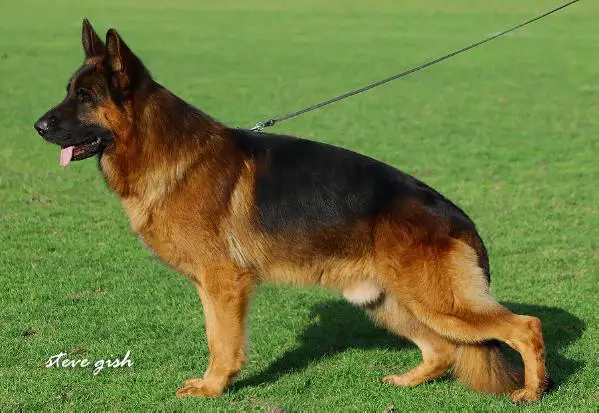 |
VA2 Chira del Frutetto
(Barros v.d.Fürstenau-Demi vom Napaweinberg)
 |
VA3 Paer v. Hasenborn 19.09.06
(Quenn Löher Weg - Yada Mittelwest)
 |
VA3 Lee vom Frankengold
(Ingodds Agassi - Daggi vom frankengold)
 |
VA4 Quattro v.d. Partnachklamm 11.03.08
(Zamp Thermodos - Ora Müdesheimerland)
 |
VA4 Yakimo vom Feuermelder 22.04.2010
(Joker vom Eichenplatz-Amanda am Seeteich)
 |
VA5 Ustinov v. Römerland 15.09.06
(Quantum Arminius - Kira Lacroz)

|
VA5 Lara vom Messebau 12.03.2008
(Arak Ferme Malgre L'eau-Xenia v.Messebau)
 |
VA6 Mentos vom Osterberger-Land
(Nando v Gollerweiher- Quencie Osterberger-Land)

|
VA6 Wendy von der Piste Trophe 05.09.2008
(Furbo degli Achei - Grace de Cuatro Flores)
 |
VA7 Sultan v.d. Jahnhöhe 20.12.07
Vegas Haut Mansard - Irmi Jahnhöhe)

|
VA7 Lara von Regina Pacis 14.02.09
(Tyson Köttersbusch-Coco von Regina Pacis)
 |
VA8 Hagadahls Figo 28.11.08
(Furbo degli Achei - Hagadahls Wanda)
 |
VA8 Nani vom Wiedeck
(Zamp Thermodos - Dunja vom Wiedeck)
 |
VA9 Labo vom Schollweiher 07.03.2010
(Arex von der Wilhelmswarte - Fraya d'Ulmental)
 |
VA9 Zambia degli Achei
(Ober von Bad-Boll - Fenia della Gens Pontina)
 |
VA10 Chacco von der Freiheit Westerholt 19.09.08
(Yerom vom Haus Salihin - Pitty von der Freiheit Westerholt)

|
VA10 Daisy von Melanchthon 08.02.2010
(Remo vom Fichtenschlag - Zad Feetback)
 |
VA11 Etoo aus Wattenscheid 28.03.09
(Paer vom Hasenborn - Chelsea aus Wattenscheid)
 |
VA11 Kaleya vom Amur
(Paer Hasenborn - Winona vom Amur)

|
VA12 Omen vom Radhaus 27.08.09
(Remo vom Fichtenschlag - Oprah von Aurelius)
 |
VA12 Quenna von Regina Pacis 21.05.2010
(Arex von der Wilhelmswarte - Fabia vom Agilofinger)
 |
VA13 Yankee vom Feuermelder
(Joker vom Eichenplatz - Amanda am Seeteich)
 |
VA13 Blianka v. Osterberger-Land 22.10.2009
(Remo vom Fichtenschlag - Neila v. Suentelstein)
 |
VA14 Enosch von Amasis 05.02.2009
(Ober von Bad-Boll - Bali von Amasis)
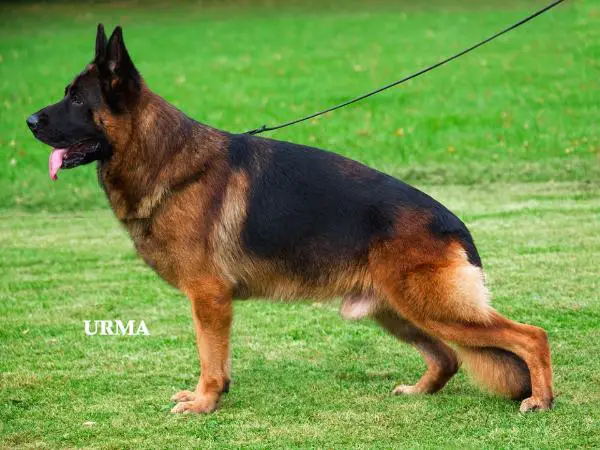 |
VA14 Faya vom Adelschlag 08.03.2010
(Vegas Haut Mansard-Gila v.Hause Kampenhuber)
 |
V1 Fulz di Zenevredo 21.10.08
(Furbo degli Achei - Jemi di Zenevredo)
 |
V1 Dana du Val D'Anzin 10.04.2008
(Tyson vom Köttersbusch-Tabata du Val D'Anzin)
 |
V2 Wallaby vom Kapellenberg
(Yoker vom Leithawald - Zahira vom Kapellenberg)
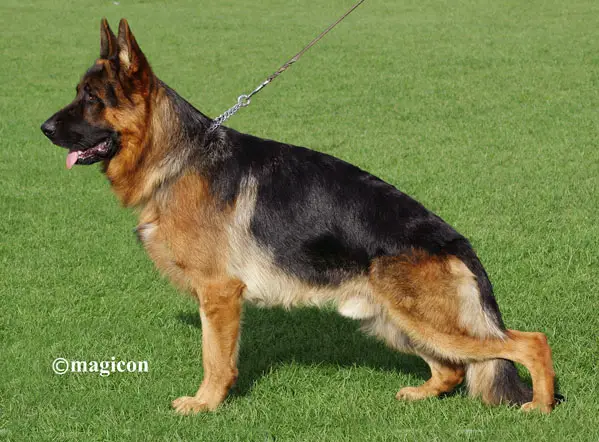 |
V2 Carlotta di Casa Beggiato 02.12.2008
(Ramiro von Arlett-Grace di Casa Beggiato)
 |
V3 Yoker vom Westervenn
(Unzo van Noort - Zaira von der Ybajo Hoeve)
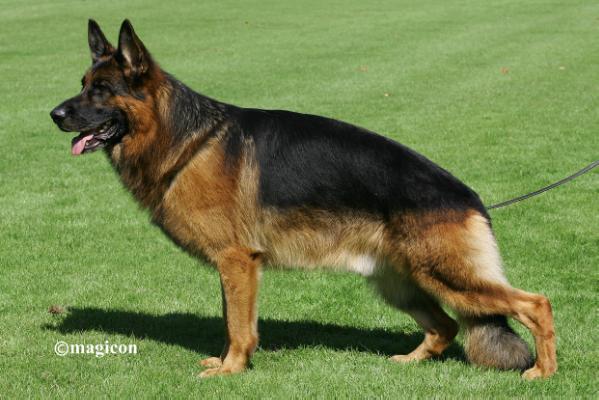 |
V3 Grace vom Frankengold 14.06.2009
(Bruno v.Vierhundert Hertz-Darling v.Frankengold)
 |
V4 Conbhairean Uno 26.10.08
(Carlon von der Sudheimer Linde - Conbhairean Linzi)
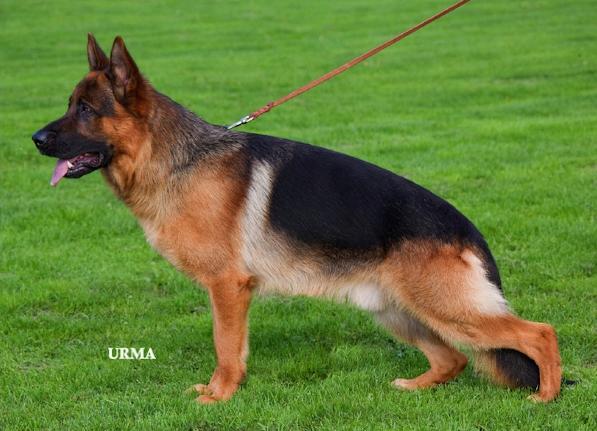 |
V4 Queen vom Kapellenberg 15.08.2008
(Erik v. Elzmündungsraum-Yollie v.Kapellenberg)
 |
V5 Cobra d'Ulmental 31.10.2009
(Remo vom Fichtenschlag - Venus d'Ulmental)
 |
V5 Ronja vom Schlos Rügland
(Shirkan vom Schlos Rügland-Jana v.Mühlenblick)
 |
V6 Ilano vom Fichtenschlag
(Remo vom Fichtenschlag - Viana vom Fichtenschlag)
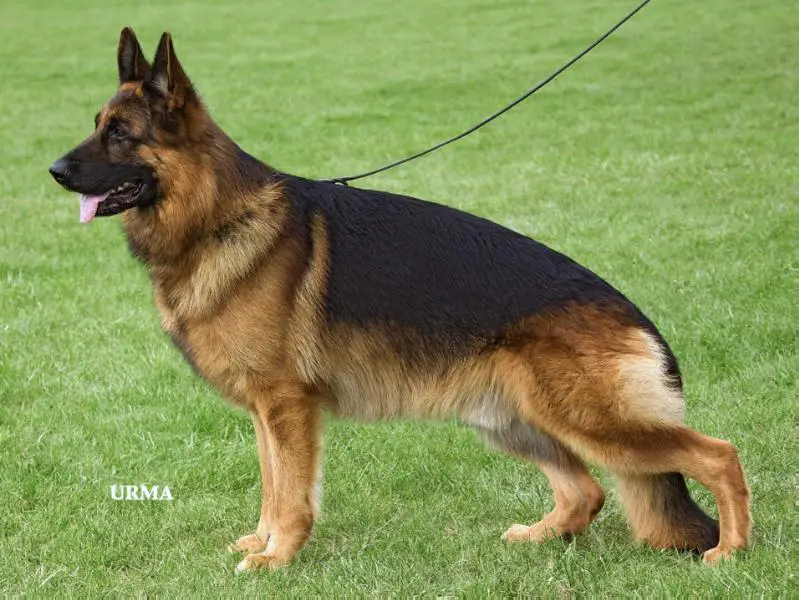 |
V6 Unique vom Eichenplatz
(Remo vom Fichtenschlag-Alisha vom Eichenplatz)
 |
| JHKLR - Joachim Stiegler |
JHKLH - Franz-Peter Knaul |
|
SG1 Leo von der Zeinteiche 25.11.2010
(Furbo degli Achei - Yanka von der Zenteiche)
 |
SG1 Darling von Godalis 23.11.2010
(Paer vom Hasenborn - Ornella von Satyr)
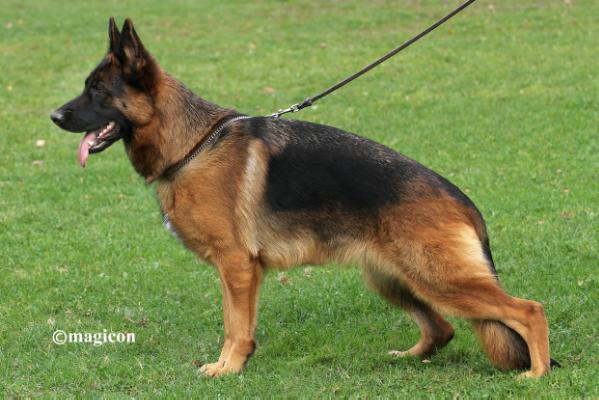 |
|
SG2 Figo vom Nordteich 03.09.2010
(Remo vom Fichtenschlag-Aida vom Nordteich)
 |
SG2 Bella del Vento Margio 13.11.2010
(Kay v.Gamsetal-Intra aus der Brunnenstrase)
 |
|
SG3 Champ von Haus Voerde
(Renzo vom Holtkämper See-Yannica von Haus Voerde)

|
SG3 Pari vom Holtkämper See 23.12.2010
(Renzo Holtkämper See-Mega Holtkämper See) |
|
SG4 Team Marlboro Kashmir 22.11.2010
(Guccy vom Heinrichplatz-Team Marlboro Quess)
 |
SG4 Lea di Fossombrone 08.11.2010
(Xero Delle Terre Matildiche-Wilka di Fossombrone)
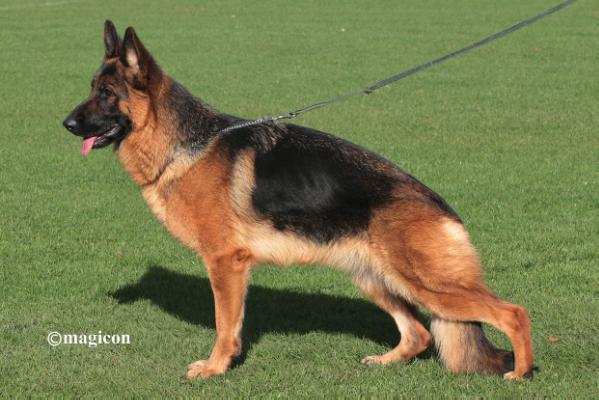 |
|
SG5 Schumann von Tronje
(Dux de Intercanina-Anuschka de Jovipe)
 |
SG5 Ayda vom Roten Feldweg 09.09.2010
(Fritz v. Kuckucksland-Leika vom Sommerrod) |
|
SG6 Quark di Val Sant' Anna 15.09.2010
(Furbo degli Achei - Liebe di Val Sant' Anna)
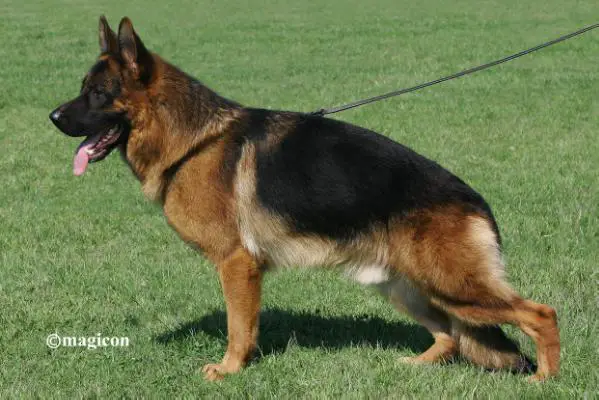 |
SG6 Giny du Val D'Anzin
(Paer vom Hasenborn - Bady du Val D'Anzin)
 |
|
SG7 Granitt vom Osterberger-Tal
(Fulz di Zenevredo - Anka vom Osterberger-Tal)
 |
SG7 Electra von Wilhendorf
(Gigolo Bärenschlucht - Frenzi Grafenstein)
 |
|
SG8 Vigo von der Grafschaft Mark 17.02.2011
(Chacco von der Freiheit Westerholt- Exe von der Graftschaft)

|
SG8 Lola vom Hannes
(Nino von Tronje - Vienchen von Hannes)
|
|
SG9 Aslan vom Türkenkopf 14.09.2010
(Paer vom Hasenborn - Enya vom Steinernen Weg)
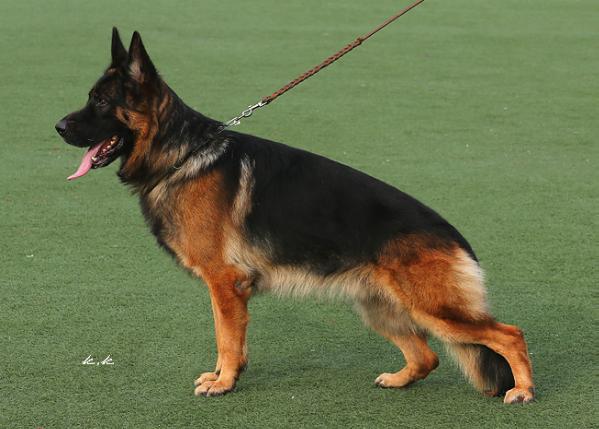 |
SG9 Pinie vom Haus Salihin 22.09.2010
(Dux de Intercanina - Vivi van Dongmiran) |
|
SG10 Luger vom Aspenhaus 27.10.2012
(Wegas vom Fichtenschlag - Xella vom Aspenhaus)
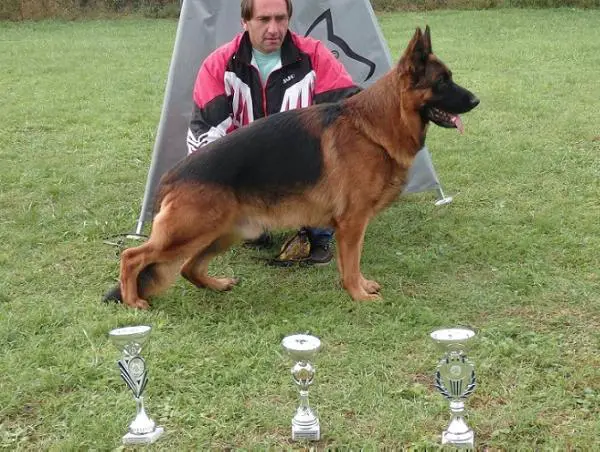 |
SG10 Diva di Casa Rosy
(Vegas Haut Masnard-Fiona del Rione Antico)
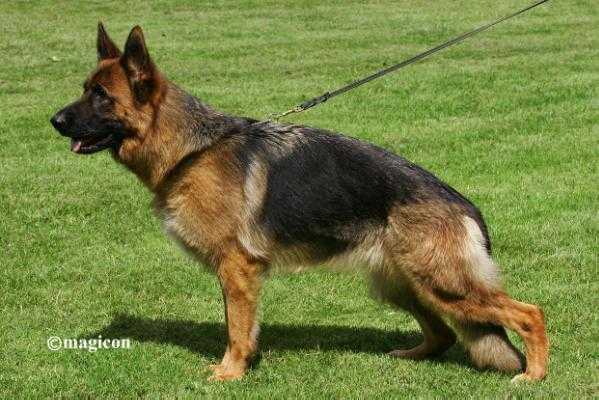 |
|
| |
SG11 Oberlauf Zhasmin
 |
|
| |
SG14 Unna vom Gleisenauer Schloß
 |
|
BSZS 2012, Langstockhaarig ( long coated)
LSTH-GHKR Note Platz Kat.-Nr. Name des Hundes Eigentümer Wohnort Land
Verein für Deutsche Schäferhunde (SV) e.V. Seite 1 02.09.2012 11:41:49
VA 1 1510 Orion Mavic Poland Krzysztof Dobrzanski Brzesko-Okocim PL
V 1 1505 Princton vom Ecknachtal Christopher Lambert Thannhausen D
V 2 1516 Worenus von der Kahler Heide Gerd Reims Langenselbold D
V 3 1515 Schicko von der Liebeswarte Heinz Späth Neu-Ulm D
V 4 1503 Dexter vom Fichtenschlag Uta Horn Neetze D
V 5 1511 Wolly de Los Madriles Luis Corella Arroquia Pozuelo de Alarcon E
V 6 1514 Imperio vom Bierstadter Hof Jörg Wallek Nürnberg D
V 7 1518 Diego vom Schloß Schenkenturm Christian Hadenfeldt Würzburg D
V 8 1507 Lamborghini di Casa Pileci Andrea Stevens Mönchengladbach D
V 9 1502 Hook vom Luckhauser Kotten Heinz Platacis Wuppertal D
V 10 1509 Vergil vom Heidknapp Karin Harkebusch Telgte D
V 11 1504 Payne vom Haus Clanora Anke Dahl Ottweiler D
V 12 1506 Pico vom Langenbungert Elmar Eufinger Wallerfangen D
SG 1 1508 Quirino Andreas Igel Arnsberg D
T2 0 1517 Kwantum Kenola Sebastian Zajaczkowski Ztobizna PL
VA1 Orion Mavic Poland.
1er poils longs à recevoir le titre de Champion du Monde
Note Platz Kat.-Nr. Name des Hundes Eigentümer Wohnort Land Verein für Deutsche Schäferhunde (SV) e.V. Seite 1 02.09.2012 11:28:06
SG 1 5508 Yuko vom Spessartblick, Leon Külbel Unterweißbach D
SG 2 5502 Vulkan vom Land, Mecklenburg Silke Spahr Geesthacht D
SG 3 5509 Bellamie vom Praester-Land, Ilona Kartman Emmerich D
SG 4 5515 Carlos von der Wagnerzunft, Georg Wagner Abensberg D
SG 5 5514 Fuchur von Tho-Sei, Monika Winter Bergkamen D
SG 6 5516 Irbo De-Bes, Ryszard Klapkowski Jelcz-Laskowicz PL
SG 7 5506 Gentleman von der Rammheide, Gabriele Siffrin Schiffweiler D
SG 8 5512 Orell von Honduras, Petra Schilinski Petershagen D
SG 9 5511 Keno von Melanchthon, Stefanie Schopf Reilingen D
SG 10 5510 Ballack de la Nacio Catalana, Roger Pallares Bertrab San Joan de Vilatorrada E
SG 11 5504 Largo von Gerberra, Heike Hertwig Oelkassen D
SG 12 5503 Igor von Haus Pfalzerheide, Ryanne Pieper Goch D
SG 13 5518 Atze von den zwei, Steinen Wolfgang Leggewig Thale-Westerhausen D
SG 14 5505 Thilo von der Blautalhalle, Manuela Hirsch Bad Schussenried
_1.jpg)
SG1 Yuko vom Spessartblick, frère de notre beau Yvo
